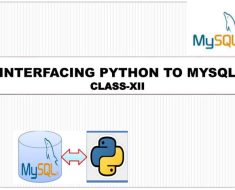 R vs Python for data analysis: Deciding the best programming language for your needs
R vs Python for data analysis: Deciding the best programming language for your needs
In the dynamic field of data science, the selection of a programming language is a pivotal decision that can profoundly influence the efficacy and outcomes of a data analysis project. Among the prominent contenders in this domain are R and Python. This article aims to meticulously explore the characteristics, strengths, and weaknesses of both languages, providing a comprehensive analysis to aid in making an informed decision aligned with the specific demands of data analysis tasks.
R for Data Analysis:
R has long been celebrated for its statistical expertise and comprehensive suite of packages tailored for data analysis. Developed by statisticians, R provides a rich environment for exploring, visualizing, and modeling data. Its syntax is designed to express statistical concepts succinctly, making it an ideal choice for statisticians and researchers.
Rich Statistical Libraries:
R boasts an extensive collection of statistical libraries and packages. From traditional statistical tests to advanced modeling techniques, R provides a dedicated toolbox for statisticians to analyze data with precision and depth.
Data Visualization Capabilities:
One of R’s standout features is its powerful data visualization capabilities. The ggplot2 library, for example, enables users to create intricate and customizable visualizations, making it a favorite among data visualization enthusiasts.
Community and Documentation:
R has a robust and active community of statisticians and data scientists. The availability of comprehensive documentation and a wealth of online resources facilitates learning and problem-solving within the R ecosystem.
Python for Data Analysis:
Python, known for its versatility and readability, has become a dominant force in the data science realm. With libraries like NumPy, Pandas, and Matplotlib, Python provides a flexible and efficient environment for data analysis, making it accessible to a broader audience, including software engineers and machine learning practitioners.
Versatility and General-Purpose Nature:
Python’s strength lies in its versatility as a general-purpose programming language. Beyond data analysis, Python programming language is widely used for web development, machine learning, and more. Its syntax is beginner-friendly, attracting a diverse range of users.
Data Manipulation with Pandas:
The Pandas library in Python simplifies data manipulation tasks, allowing users to handle data frames efficiently. Pandas provides functionalities like those in R, making Python a compelling choice for data cleaning and preprocessing.
Machine Learning Integration:
Python’s popularity in machine learning has soared with libraries like scikit-learn and TensorFlow. The seamless integration of data analysis and machine learning workflows in Python positions it as an attractive choice for end-to-end data science projects.
Comparison and Considerations:
Syntax and Learning Curve:
R’s syntax is tailored for statistical analysis, making it intuitive for statisticians. Python’s syntax is more general-purpose and may be perceived as more readable by those with a programming background. The learning curve depends on the user’s prior experience.
Community and Ecosystem:
Both R and Python have vibrant communities and ecosystems. R excels in statistical packages, while Python’s ecosystem extends beyond data science. Consider the specific needs of your project and the availability of relevant packages.
Data Visualization:
While both languages offer powerful visualization tools, R’s ggplot2 is renowned for its declarative approach, whereas Python’s Matplotlib and Seaborn provide a versatile and customizable experience.
Integration with Other Tools:
Consider the integration of each language with other tools and databases. Python’s versatility allows for seamless integration with various applications, while R may have specialized connectors for certain statistical databases.
Conclusion:
In the R vs Python debate for data analysis, there is no one-size-fits-all answer. The choice depends on your background, project requirements, and personal preferences. R excels in statistical analysis and visualization, catering to the needs of statisticians and researchers. Python’s versatility, readability, and integration with machine learning libraries make it a preferred choice for a broader audience, including software engineers and data scientists involved in end-to-end data science projects. Ultimately, both languages have their strengths, and the best choice depends on the specific context and goals of your data analysis endeavors.







